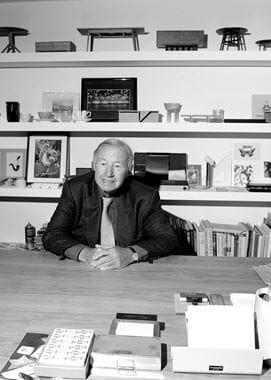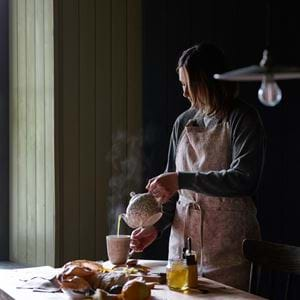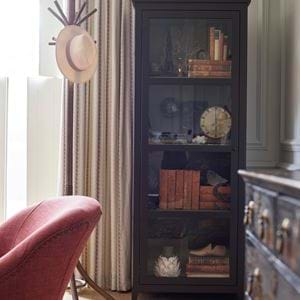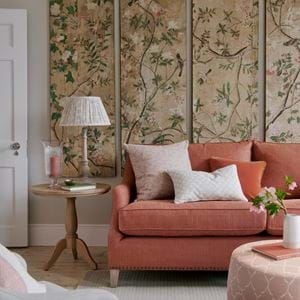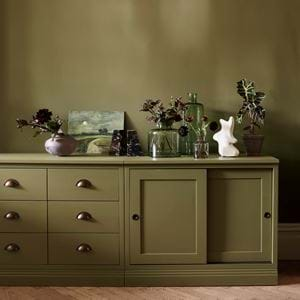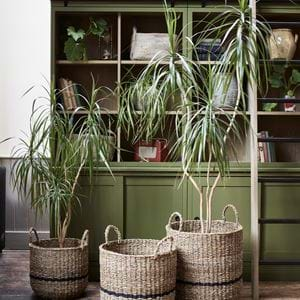Remembering Sir Terence Conran
Remembering Sir Terence Conran
In tribute to one of Britain’s most influential and ground-breaking designers, former Livingetc editor Suzanne Imre shares her own memories of Sir Terence Conran, as well as those from a handful of the people who were fortunate enough to meet, and to work, with him.
So much has been written about designer, retailer and restauranteur Sir Terence Conran, who passed away earlier this month. How he not only influenced, but changed, our way of living. How he launched Habitat (and how radical it was at the time). And, not least, how he made the Design Museum happen; his great legacy to Britain and, it is said, his proudest achievement. Former Design Museum director Deyan Sudjic summed him up best, “No one has done more to create modern Britain than Terence Conran. He spent his whole career looking for ways to make life better for everyone.”
But behind the achievements, the well-charted career highs – and a few lows – was a man who loved to engage with people, who was making plans right to the end and who felt passionately about improving the way we live.
I met Sir Terence when I was a new editor on Livingetc magazine, back when modern interiors meant office-style hard sofas and lots of chrome and glass. We were trying to forge a new way in the established magazine world and I think Terence liked our plucky, design-is-not-intimidating approach. He became a champion of what we did and regularly sent me notes commenting on the latest issue. Most of the notes were encouraging but he didn’t hold back when we featured Barton Court, his beautiful country home in Berkshire, and erroneously referenced the size of one of the rooms. “I have spotted an error on page 40,” he wrote. “Thirty square feet is about the size that you can barely swing a cat, 3,000 sq. ft is a small ballroom for jazz dancing, not waltzes.” We stood corrected, and all the wiser on dance floor capacities too.
The Times interiors editor Katrina Burroughs remembers Sir Terence as a “generous and charming host and raconteur” with a wry humour. She tells the story of interviewing him at Barton Court a few years ago with amusement. “At 10.30am, we settled into a mammoth squashy sofa in his light-flooded drawing room, and he was soon offering me a gin and tonic and a Hoyo de Monterrey Epicure No 2. By 11am, the interview was going swimmingly. He described fixing egg boxes to the walls to absorb damp in a rundown former home. ‘That sounds like student days,’ I said. ‘It was divorce days,’ he answered.”
I was lucky enough to be a guest of Terence and his wife, Vicki on a few occasions, but each invitation heralded the inevitable dilemma: what gift to take? Once I tracked down a hand-crafted pencil sharpener as he loved to sketch in pencil, another time I’d heard that he liked a particular vielle prune brandy so set out to find a bottle. No store or vintner stocked it, but as I was about to give up, I heard a London restaurant might have some. I duly called, and yes, they did have some bottles, “But Madame, we cannot sell them, you have to come in and drink them,” cooed the sommelier. I played my ace card: “It’s a house gift for Sir Terence Conran,” and the next day I arrived at Barton Court with said bottle, much to his delight.
Sir Terence’s tenacity was a thing to behold. Carmel Allen, commercial CEO of The Tate worked with Sir Terence as the creative and marketing director for The Conran Shop, but she first met him when she worked at Heals. She recalls him explaining how, as a student in the early 1950s, he was a regular visitor to their offices: “I was always taking my portfolio to Heal’s, trying to get them to give me a job. It was the place to sell textiles.” As she notes, “Everything you need to know about Terence is in that statement; he didn’t just get a job, he became the CEO!”
Designer Sean Sutcliffe founded Benchmark Furniture with Sir Terence, and the business still operates from the grounds of Barton Court. He recalls the fun he had driving Sir Terence around France in his old Citroen, and being shown Paris for the first time by such a tour guide, one Michelin-starred restaurant at a time. But it’s the designer’s commitment to the fundamentals of his trade that Sean holds dear. “What was most notable about Terence was that he knew how to make stuff,” says Sean. “Whenever he met a young designer, his first question was ‘can you make stuff?’. He was pragmatic and practical which, as a furniture maker, was a joy because he wanted to create the possible for people.”
For all his accomplishments, it’s the little things that I’ll remember. The Conran-blue shirts, a back-of-the-envelope pencil sketch of a favourite piece of furniture that I wanted to pocket but didn’t dare, and his puckish one-liners, pronounced with a twinkle in the eye. It’s safe to say, Sir Terence Conran will be remembered for so much, by so many.

